Affinity Mapping
Once interviews are complete, you’ll have a lot of data from users. You’ll have heard a lot of stories about their experiences and have a good understanding of what they want and what they need. But what are you supposed to do with all this information? How do you sort it in a way that helps focus and move forward in the design thinking process?
Luckily, there is a technique that allows you to take the data from all your user interviews and organize that data in a way that helps you understand users better. This process is known as affinity mapping, and it’s the final step to paint a clear picture of the types of people you are trying to design for.
What Is Affinity Mapping?
The purpose of the first step of the design thinking process is to empathize. You must find users, learn more about them, and discover their wants, needs, and frustrations. The goal is to understand them so you can create something that helps them.
As a final part of the empathize step, you have a good understanding of who you are designing for. Here, you take all the user research and combine it into something called a persona—a type of person to design for. To do so, you need to take insights from the user interviews and search for any themes that emerge (FIGURE 2.23). This process is called affinity mapping.
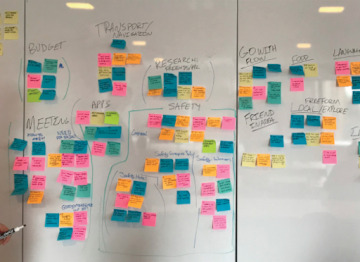
FIGURE 2.23 An affinity map, which groups user interview data into themes that inform our design thinking goals.
Affinity mapping is a way to turn interview notes into insights about users. The process begins by writing observations on sticky notes. You comb through user interview transcripts for insights that stood out during the interview, like a quote, a behavior, a like, or a dislike. You write each single observation on its own sticky note and put that on a wall or whiteboard.
Once you have written all the observations from across all the interviews, you start the sorting process. Place similar notes into groups. Analyze those groups to form insights. Finally, refine and reframe the groups as needed until you come to a clearer picture of the users.
To watch this process in action, the Nielsen Norman Group has prepared an excellent video8 of a real-world affinity mapping session (they call it affinity diagramming in this video, but it’s the same concept).
Affinity Mapping Process
Affinity mapping is simple. First, write down all the key observations from your research.
FIGURE 2.24 shows three participants that were interviewed about a food app, for example. They answered questions about their pain points, goals, frustrations, and behaviors around cooking. Those observations became sticky notes in the affinity map.
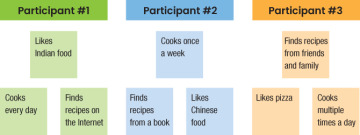
FIGURE 2.24 The first step in affinity mapping is to write down each observation for each participant and put them on a board.
Next, take similar concepts and create groupings.
For the food app, we took the individual observations and grouped similar ones. FIGURE 2.25 shows observed food preferences, how often people cook, and where they find recipes. This will help when trying to create someone to design for! Trends are developing in the data.
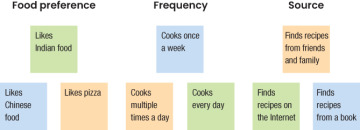
FIGURE 2.25 The next step in affinity mapping is to organize observations into groupings.
Finally, take those groupings and come up with I statements for each category.
In the food app example, we change less empathetic phrases like “frequency” or “source” into powerful, user-driven sentiments like “I cook regularly” or “I find from all over” (FIGURE 2.26). Imagine someone saying these things, which is where their power lies. It’s a lot easier to feel for users and be empathetic with these statements. They are statements you can define the problem to solve with. Perhaps you want to create an app for someone who cooks regularly—that’s an aspect you can ideate around. Maybe a food app with reminders, or rotating content? This puts you in an excellent place to eventually design.
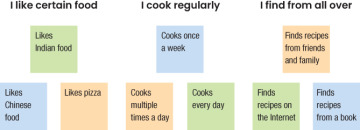
FIGURE 2.26 The last step in affinity mapping is to create titles for each grouping. The titles become behaviors and attributes for the persona—the representation of the target user.
As you make your clusters, be wary of the distribution of information in them. Let’s look at a few potential pitfalls when making groupings.
Too Few Data Points
If you have too few data points, you can’t call it an insight that applies to a lot of users. For example, if you interview six people and then create a group in the affinity map that has fewer than three sticky notes, then that observation doesn’t show up frequently enough. Try putting those observations in another group instead.
Too Many Data Points
Similarly, if you have too many data points in a group (more than 10), you can probably get more specific. It’s possible you’re missing something deeper, or you could gain multiple insights instead of the single insight you’re currently getting. Try breaking them up into multiple insights by splitting the group.
Too Few Perspectives
If you have a grouping with too many sticky notes from a single source, then that insight might not apply to the entire group. Be mindful of having a single user interview skew the results of your affinity map. If a grouping has too many of a single user, see if other users can fit into that theme as well, or consider not including that theme in your results (FIGURE 2.27).
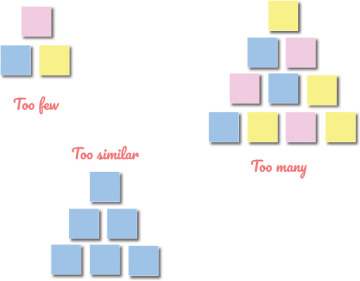
FIGURE 2.27 Examples of groupings that could be better sorted in an affinity map. Too few observations in an insight won’t apply for everyone. Too many observations in an insight can be split out into multiple insights. Too many observations from a single user will lead to bias for your persona.
Not Sure Where It Goes? Put It in the Parking Lot
If you can’t immediately find a home for an observation, that’s OK! Sometimes you’ll see an observation, not be sure where to put it, and feel confused. That’s a natural part of this process.
Luckily, there’s a technique called the parking lot to store observations temporarily as you decide where they should go. As you sort your data, come back to the parking lot from time to time and see if any of those observations fit into a category. Over time, you’ll add and remove items from the parking lot as you make more sense of your data.
Let’s Do It!
Now that you have the user interview data, you can start to affinity map that data to better understand users.
To do so, take the observations, put them on sticky notes, and sort those sticky notes into themes.
Remember the following advice as you sort your data:
One observation per sticky note.
Groupings should have “enough” observations in them to be called themes (not too few, not too many, and not all from a single user).
Write I statements for your insights once your observations have been grouped. These statements will be helpful for the next step in the process.